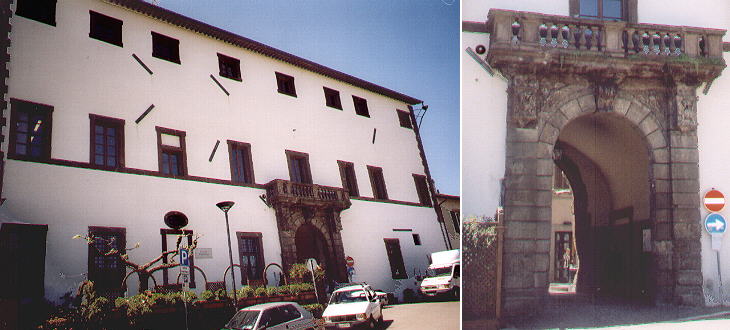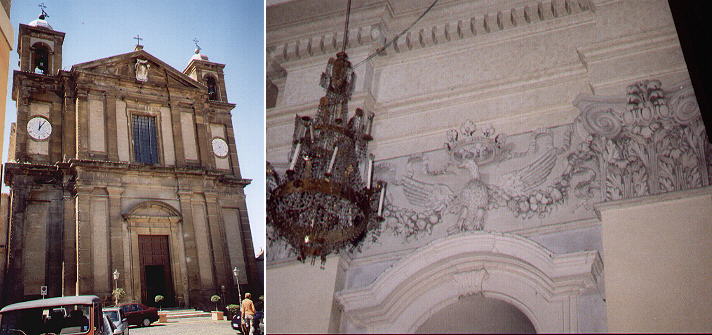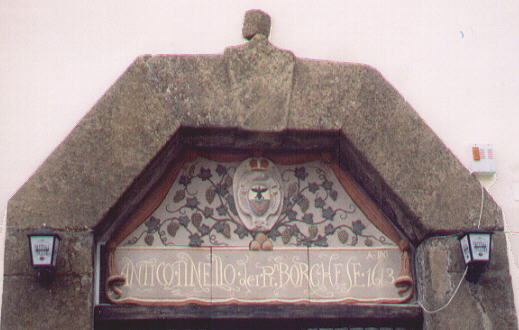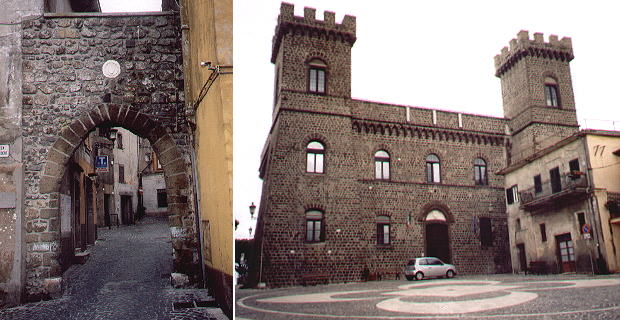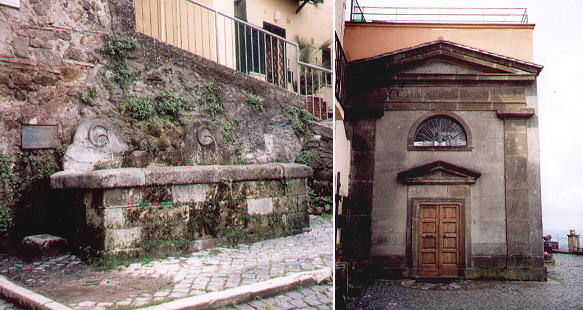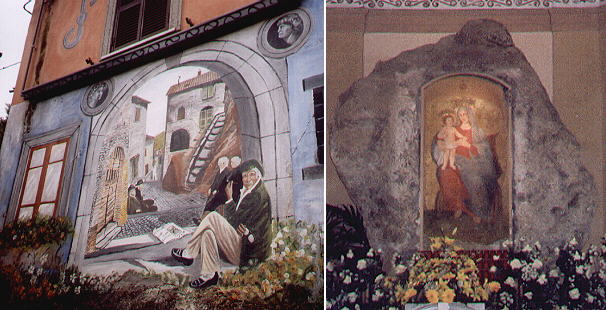  Giuseppe Vasi's Digression - other Castelli Romani
The entrance of Palazzo Borghese is still today the only entrance to the town. The Borghese took care of Monte Porzio and gave it a very urban appearance with streets converging towards S. Gregorio Magno, the main church.
The church was designed in 1666 by Carlo Rainaldi, one of the most important architects of Rome and its interior is decorated with the heraldic symbols of the Borghese family: eagles and dragons. Montecompatri
Montecompatri is a sort of twin of Monte Porzio Catone with again many signs of the Borghese rule including a church designed by Carlo Rainaldi. The name of a restaurant indicates the year (1613) the Borghese bought the town. Tinello in today's Italian means a small room next to the kitchen where families have their meals when there are no guests; in the past it meant the room where the servants had their meals. Rocca Priora
Rocca Priora is located at 768 meters (3000 feet) and it is the highest of the Castelli Romani and maybe for this reason it is called Priora after priore, prior, superior officer of a religious order. Unlike Monte Porzio and Montecompatri it did not have the advantages of being ruled by the Borghese, who cared so much about the appearance of their possessions. The lords of Rocca Priora were the Savelli, a family of great power in the XIIIth century, but of limited wealth in the following centuries. The narrow gate which constitutes the only access to the town bears their coat of arms. The Savelli had their castle on the highest point of Rocca Priora. Its medieval looks were too much emphasized by a XIXth century renovation. The inhabitants of Rocca Priora had a chance in winter to earn a little money by storing snow in nearby caves. The snow was pressed and then shipped to Rome where the rich families used it in summer. Rocca di Papa
Rocca di Papa is located on the flanks of Monte Albano or Monte Cavo the highest peak of the Alban Hills and in the second half of the XIXth century it became popular among the foreigners who lived in or came to Rome due to two artists who chose to live there. Massimo D'Azeglio who, in addition to being a painter, was a writer and an Italian statesman, wrote extensively about the site in his memoirs published in the 1860s. Another artist attracted by Rocca di Papa was the German Theodor Wilhelm Achtermann who lived in Rome and in Rocca di Papa for 50 years. Achtermann, being of a profoundly religious character, promoted the erection of a chapel (Chiesa del Crocifisso) on the very top of Rocca di Papa in an area which is still called the Bavarian quarter with reference to the many German artists who lived there. A Gothic altar with three reliefs by him representing scenes from the life of Jesus is in the cathedral of Prague. He died in 1889.
On the road leading to Nemi there is a sanctuary (Madonna del Tufo) named after a madonna painted by Antoniazzo Romano (XVth century) directly on a rock of tufa. Next step in your tour of the Environs of Rome: Porto See my Home Page on Baroque Rome or my Home Page on Rome in the footsteps of an XVIIIth century traveller. |
All images © 1999 - 2004 by Roberto Piperno. Write to romapip@quipo.it
